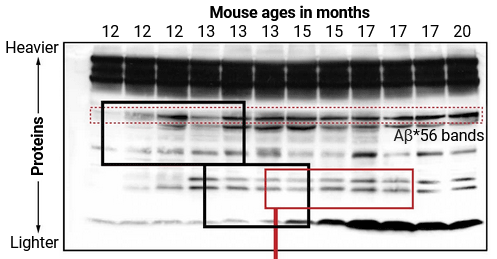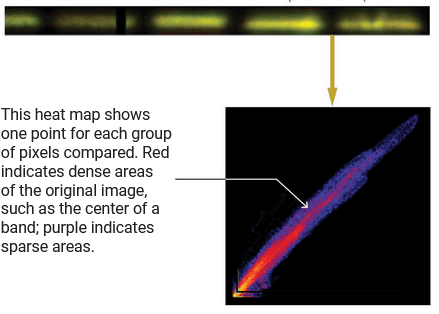Possibility of image fabrication in important papers related to the cause of Alzheimer's disease

A research treatise on the main causes of Alzheimer's disease, published in the scientific journal Nature in 2006, points out that the images may have been forged. Nature notes in the treatise that 'some charts have been alerted and are under investigation.'
Potential fabrication in research images threatens key theory of Alzheimer's disease | Science | AAAS

Potential fabrication in research threatens the amyloid theory of Alzheimer's | Hacker News
https://news.ycombinator.com/item?id=32183302
The point was a paper published in 2006 with Sylvain Lesné of the University of Minnesota as the lead author. The content that amyloid β was found to be a definitive evidence of the main cause of Alzheimer's disease and a subtype indicating the possibility of treatment, and proved to be the cause of dementia in rats. is.
The following is the treatise, but at the beginning, 'Nature's editorial department has been alerted to concerns about some charts in this paper. Nature is investigating these concerns and further answers from the editorial department. Will be done as soon as possible. In the meantime, readers are advised to be careful in using the results reported in this article. '
A specific amyloid-β protein assembly in the brain impairs memory | Nature
https://doi.org/10.1038/nature04533
Matthew Schrag, a neuroscientist and doctor at Vanderbilt University, paid attention to Nature and the National Institutes of Health, which funded the study.
Mr. Schlag set out to investigate this treatise in the first place when he met a lawyer who was introduced to a colleague. The lawyer was a client of two prominent neuroscientists who was investigating the Alzheimer's disease drug Simphyllum by Cassava Sciences. 'Simphyllum' has been claimed to improve cognitive ability by repairing a protein that blocks the deposition of amyloid β, which is characteristic of Alzheimer's disease, in the brain. However, Mr. Schlag raises doubts about the treatise on the causes of Alzheimer's disease.
Schlag avoids the word 'injustice' in criticizing research related to Lesne and Cassava Sciences. This is due to the idea that it is necessary to look at the original complete unpublished image and raw numerical data for proof of fraud, but it is a verification focusing on the range that can be considered from the published image, Shrug. He described it as a 'red flag (danger signal)'.
The following is one of the images shown by the scientific journal Science as in the treatise in question. A co-author of the treatise, following Mr. Schlag's point that there is a cut mark indicating that a band containing 'amyloid β56' and other proteins, which are said to be the cause of Alzheimer's disease, was improperly manipulated. It was published by a certain Karen Ash on PubPeer. The black frame is attached by Mr. Ash. The part surrounded by the red dashed line is 'amyloid β56', which indicates that the older the mouse, the more likely it is to develop Alzheimer's disease.

This is a magnified part of the image. 'Some bands are unusually similar, and in some cases amyloid β56 is manipulated to look more than they really are,' Shrug said.

Shrug compared the contrasts of the two bands to match.

Then, after blackening the background to make the band easier to see, I colored red and green respectively to match the size and orientation accurately.

I layered two bands. Red and green can be seen in the parts that differ from band to band, and yellow in the parts that completely overlap. It was '0.98' when the correlation function showing the strength of the relationship between the two bands was calculated. The correlation of the same image is '1', which indicates that the two bands are so similar that they do not seem to be a coincidence.

When completely unrelated bands are overlapped, different green and red parts can be clearly seen for each band, and although there is some correlation, the degree of correlation is lower than in the previous example.

In December 2021, Mr. Schlag visited a site called 'PubPeer' in search of examples that would be useful for his own research, focusing on scientists related to Cassava Sciences. PubPeer is a site where life science researchers can gather and give feedback on treatises. Many cases have been posted in which a protein detection method called Western blotting was used to find traces of removing a band indicating a protein or inserting it in a place where it did not originally exist.
In a paper published in The Journal of Neuroscience, Schlag, who investigated 'Alzheimer's disease' at PubPeer, found that the marker used to distinguish amyloid β-like proteins in mouse brain tissue, the credibility of blots. Discovered that questions have been raised. Three of the treatises pointed out were completely unknown to Shrug, with Lesne as the lead or final author.
Immediately, Schlag searched PubPeer for another of Lesne's treatises, and eventually arrived at the Nature treatise in question. Schlag asked Elizabeth Bik and Yana Christopher, who are familiar with image analysis, to revisit their findings. The two agreed that there were traces of duplicate images and cut-and-paste blots, while pointing out the possible effects of inadvertent effects during image processing. We also identified a suspicious blot that Mr. Shrug was unaware of.
The scientific journal Science also commissioned independent researchers and experts to investigate this matter over a period of six months. The result was like suspicious of Mr. Lesne's research while supporting Mr. Schlag's suspicions. Donna Wilcock, an Alzheimer's disease expert at the University of Kentucky, who conducted the investigation at the request, said that multiple images had been tampered with as 'shockingly overt.' rice field.
Since this 2006 treatise, Lesne and Ash have written numerous treatises, sometimes jointly and sometimes independently.
Mr. Schlag and Mr. Bik have identified more than 20 suspicious treatises and have contacted some journals since early 2022. As a result, the 2012 paper published in The Journal of Neuroscience has been image-corrected. However, according to Mr. Shrug, the replaced image also shows inappropriate changes.
Erratum: Larson et al., “Soluble α-Synuclein Is a Novel Modulator of Alzheimer's Disease Pathophysiology” | Journal of Neuroscience
https://doi.org/10.1523/JNEUROSCI.0896-22.2022
Mr. Lesne did not comment on this matter. The University of Minnesota also responded that it was inquiring about Mr. Lesne's research and was investigating it.
The treatise has been cited more than 2,300 times since its publication, and the National Institutes of Health has provided $ 290 million in support for amyloid β research.
While there are strong comments on social news site Hacker News, ' If this is true, it's more than fraud. It's a crime against humanity. ' ' The biggest loss is 16 years of research in the wrong direction. ' Although it is possible that is the causative agent, the amyloid β56 claimed by Mr. Lesne is already excluded from the candidates for the causative agent of Alzheimer's disease, so even if there is a fabrication in this paper, the effect is not so great. I have.
Related Posts:
in Science, Posted by logc_nt







